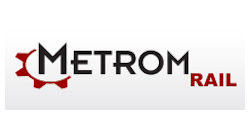Riders of public transit hear frequently about the money spent to boost system performance and reduce delays. But when this money doesn’t quickly result in tangible improvements, frustration mounts. As a result, public transit issues often become politically charged. However, the core problem isn’t politics — it’s technology.
Transit agencies face a balancing act as they seek to keep riders and workers safe while pursuing technological improvement and increasing levels of train throughput to support the costs associated with these goals. Unfortunately, technology lets them down too often, and they struggle to meet their objectives.
The New York City Metropolitan Transportation Authority’s recent Genius Transit Challenge, which recognized innovative ideas related to signaling, subway cars and communications, was a sign that the transit industry is beginning to re-evaluate the current state of technology.
Metrom Rail was honored to be named a winner in the signaling category. Its proposal included advanced communication technology and a key conceptual shift in the structure of train control systems. In short, Metrom Rail seeks to make trains smarter, an idea that has cascading benefits for agencies in terms of installation time, cost of deployment, efficiency and throughput.
Move past outdated technology
No two agencies are the same in size, scope, ridership or management directives. But train control solutions on the market today are often cumbersome, one-size-fits-all systems that require costly and time-consuming infrastructure overhauls. And, in the end, these systems can actually reduce train throughput.
The transit industry is overdue for technological disruption. Drawing on engineering experience spanning the defense, automotive, and heavy industrial industries, Metrom Rail has spent the last eight years working with both Class I and transit railroads to pinpoint the industry’s most daunting challenges and develop modern, cost-effective solutions to address them.
Ultra-wide band communication technology (UWB) serves as the backbone of our current solutions (Metrom Rail has successfully deployed more than 3,000 UWB-enabled Collision Avoidance Systems for Maintenance of Way fleets across North America since 2011), as well as its visionary Genius Challenge proposal. UWB allows for incredibly precise speed- and distance-based ranging between trains and key wayside elements, and works best in underground and dense urban environments, where traditional RF-based systems fail to provide reliable or accurate performance.
A UWB-based system can control train behavior, enforcing operating rules and ensuring trains slow or stop prior to any potentially hazardous conditions (e.g., red signals, curves). In a departure from older signaling systems, which cannot automatically enforce close-quarters operation, and communications-based train control (CBTC) systems, which require mandatory spacing enforcement to allow for inaccuracies in train location, UWB enables trains to safely move closer together under certain conditions. Overall, UWB-based systems are designed to move as many trains through a system as possible with the highest degree of safety and reliability, all with a smaller hardware set and more time- and cost-effective installation process than traditional systems.
A train-centric vision for transit
Most traditional train control systems rely on centralized, back-office data infrastructure. This infrastructure typically requires a prohibitive amount of time and funding to implement. So, in developing our Genius Challenge proposal, we started with a simple question: “How can we make trains more intelligent, and minimize the reliance on back-office and wayside infrastructure?”
Autonomous car developers didn’t build up roadside or back-office infrastructure. Instead, they put intelligent on-board systems in the cars. We sought to replicate this approach in our Genius Challenge submission and pursue a “smart train” solution that agencies could deploy in significantly less time and for a fraction of the cost of traditional train control systems.
By leveraging the accuracy of UWB technology and deploying the intelligence of an onboard control system, agencies can make trains “smarter” and generate more reliable performance and greater throughput. A “smart train” system works with existing infrastructure, simplifying the installation process. And with a reduction in the use of wayside cabling and hardware, it can also significantly trim ongoing maintenance work.
Reimagine transit rail technology
As transit agencies aim to improve operational efficiency and riders’ experiences, they need to move beyond the stagnant state of traditional train control technology.
The MTA has demonstrated a commendable commitment to inventive thinking through the Genius Challenge. Yet, identifying unique ideas is only the first and easiest step of the process. Agencies now need to take advantage of emerging yet proven technologies and pursue modern approaches to train control. A shift toward UWB-based systems will allow agencies to adopt more aggressive implementation schedules, better control project costs and realize the tangible improvements that their riders have long sought.
Rick Carlson Jr. is director of corporate strategy for Metrom Rail, a supplier of technology that helps improve rail efficiency and safety. Metrom Rail was recently named a winner of the Metropolitan Transportation Authority’s Genius Transit Challenge.




